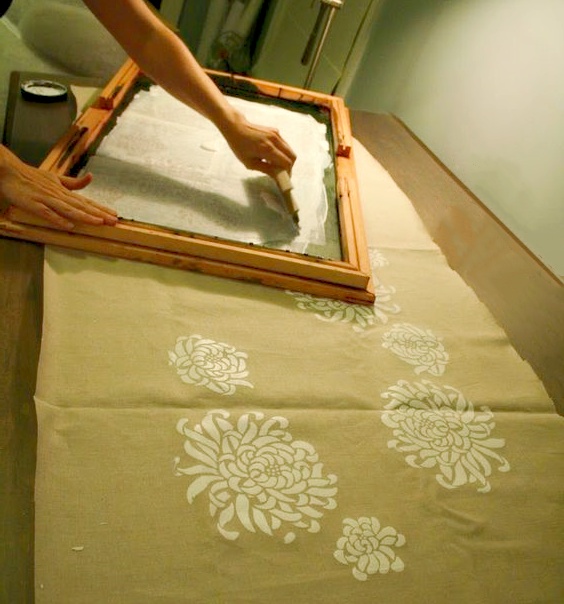Choosing the right screen printing emulsion is crucial for achieving high-quality prints. Whether you’re using plastisol ink or screen printing ink plastisol, the emulsion you choose will directly affect your printing process and final results. This guide will walk you through the basics of screen printing emulsion, the different types available, and how to select the right one for your needs.
The Science Behind Screen Printing Emulsion
Screen printing emulsion is a light-sensitive substance that plays a critical role in the screen printing process. It is applied to the mesh screen, where it forms a stencil that controls where the ink will pass through to create the desired design on the substrate. When exposed to UV light, the emulsion hardens, leaving a pattern that corresponds to the artwork.
The quality of the emulsion affects the sharpness of the image, the durability of the stencil, and the ease of the printing process. Understanding the science behind emulsion helps in selecting the right type for your specific project.
Photopolymer Emulsions
Photopolymer emulsions are pre-sensitized, meaning they are ready to use straight out of the container. These emulsions are highly sensitive to UV light, requiring a shorter exposure time. They are ideal for large production runs where speed and efficiency are essential. Photopolymer emulsions are particularly suitable for printing with plastisol ink, as they offer excellent detail reproduction and durability.
Diazo Emulsions
Diazo emulsions require the addition of a diazo sensitizer before they can be used. These emulsions are less sensitive to light, resulting in longer exposure times. However, they offer greater flexibility and are more forgiving during the exposure process. Diazo emulsions are a good choice for beginners or those working with detailed designs that require longer exposure times to achieve optimal results.

Dual-Cure Emulsions
Dual-cure emulsions combine the properties of both photopolymer and diazo emulsions. They offer a balance between sensitivity and durability, making them suitable for a wide range of screen printing applications. Dual-cure emulsions are versatile and can be used with various inks, including screen printing ink plastisol. They provide excellent image quality and are durable enough to withstand long print runs.
Screen Printing Emulsion Types
When choosing a screen printing emulsion, it’s essential to consider the type that best suits your project needs. The three main types of emulsions are photopolymer, diazo, and dual-cure, each with its unique characteristics and benefits.
Photopolymer Emulsions
As mentioned earlier, photopolymer emulsions are pre-sensitized and highly sensitive to UV light. They are ideal for high-volume production runs, where speed and efficiency are critical. Photopolymer emulsions are known for their fast exposure times, which can significantly reduce the time needed to prepare screens. However, due to their high sensitivity, they require precise exposure control to prevent overexposure.
Diazo Emulsions
Diazo emulsions require the addition of a sensitizer, which can make the preparation process slightly more involved. However, this type of emulsion offers a longer exposure time, providing more room for error during the exposure process. Diazo emulsions are often used for printing highly detailed designs or when working with challenging substrates. They are also known for their flexibility and adaptability, making them a popular choice among screen printers.
Dual-Cure Emulsions
Dual-cure emulsions offer the best of both worlds, combining the fast exposure times of photopolymer emulsions with the flexibility and durability of diazo emulsions. These emulsions are versatile and can be used for a wide range of printing applications. Dual-cure emulsions are an excellent choice for screen printers who need a reliable and durable emulsion that can handle various inks, including plastisol ink.
Capillary Film
Capillary film is a pre-coated emulsion film that can be applied directly to the screen mesh. This film offers a consistent coating thickness, which is crucial for achieving uniform ink deposits and sharp image details. Capillary films are particularly useful for printing with fine details or when a precise ink deposit is required.
Capillary films are available in various thicknesses, allowing screen printers to choose the right film for their specific needs. They are easy to apply and can save time in the screen preparation process. However, capillary films can be more expensive than traditional liquid emulsions, so they are often reserved for high-end or specialized printing projects.

Benefits of Capillary Film
Capillary film provides several benefits, including a uniform coating thickness, which results in consistent print quality. It also reduces the risk of pinholes and other defects that can occur with liquid emulsions. Additionally, capillary film can speed up the screen preparation process, making it a popular choice for high-volume production runs.
All the Essential Screen Printing Emulsions
When it comes to choosing the right screen printing emulsion, it’s essential to consider the specific requirements of your project. Whether you’re working with plastisol ink, water-based ink, or other types of screen printing ink plastisol, the emulsion you choose will play a significant role in the success of your prints.
Compatibility with Inks
The emulsion you choose must be compatible with the type of ink you plan to use. For example, plastisol ink requires an emulsion that can withstand the heat and pressure of the curing process. Photopolymer and dual-cure emulsions are often recommended for use with plastisol inks due to their durability and fast exposure times.
Exposure Time
Consider the exposure time required for the emulsion you choose. Photopolymer emulsions offer the fastest exposure times, making them ideal for large production runs. In contrast, diazo emulsions require longer exposure times, which can be beneficial when working with intricate designs or challenging substrates.
Durability and Reclaimability
The durability of the emulsion is another critical factor to consider. High-quality emulsions can withstand multiple print runs without breaking down, ensuring consistent print quality. Additionally, consider the reclaimability of the emulsion—some emulsions are easier to remove from the screen, making cleanup and screen preparation more manageable.
Conclusion
Choosing the right screen printing emulsion is essential for achieving high-quality prints and efficient production. By understanding the different types of emulsions available—photopolymer, diazo, dual-cure, and capillary film—you can select the best emulsion for your specific needs. Whether you’re printing with plastisol ink, screen printing ink plastisol, or another type of ink, the right emulsion will ensure that your prints come out sharp, durable, and consistent.








